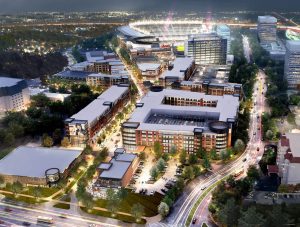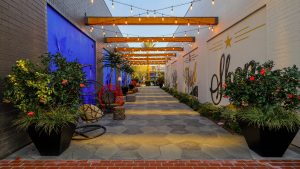The Changing Fabric of Human Movement in The Built Environment
By: NELSON Worldwide
Think 2001: A Space Odyssey, a groundbreaking and creative look into the distant future. People wondered if we would be moving around in flying cars or living on other planets. Creative storytellers wrote books and produced films depicting a life so much different than the one we knew. Some of these futuristic ways came to fruition from Kubrick’s film, like the electronic edition of The New York Times, while others are still storylines of things to come.
For so long 2020 was this far off futuristic time, and while there have been great advancements in my lifetime across several industries, our world doesn’t look all that different in my mind. We adapt to these changes over time and while I could outline some distinct differences between 1980 and today, the world around us doesn’t feel all that foreign… or does it. In the wake of COVID-19, the world around us began to shift into something that feels very foreign and much like science fiction. It makes me wonder, how something with such widespread impacts will affect the post-pandemic future.
Recently, I listened to Leslie Woo, the director of development and planning for Metrolinx in Toronto, talk about the fabric of the transportation system and how it is currently based on a concentric pattern where people commute to and from the city center. She talked about planning for the future and how the way people live and work could change from a radial pattern to a web as the city potentially becomes more of a woven fabric. As people begin to leave their homes again and businesses reopen, this idea got me thinking about how people will move through the built environment.
The fabric of the built environment is always changing. Over the last few decades there has been a shift from the once trending, enclosed central mall to more open-air, walkable environments. Today, shoppers want a different type of retail experience which is leading to the need for a greater mix of uses and opportunities for interaction, meaning these environments must be laid out more like a woven fabric. The pandemic has the power to speed up trends in these patterns and push certain aspects into new territory. As we focus at a more granular level, we look at how individual building structures may morph to adapt to a changing fabric of movement.

Just as the urban context has historically brought the masses to and from the city center with mass transit operating on a radial pattern moving people in and out of a central node, buildings (particularly in recent times) have brought people through central entry and exit points, security check points, and queuing lines. Mass transit is beginning to consider modifications to their network to accommodate a new pattern that may emerge as the places where people live and work disperses into a more open framework. Developers, owners, and tenants must engage in a thoughtful consideration of the impacts to the buildings they control and occupy and consider, together with their design team, how the access points and paths through a space may need to change to allow for greater flexibility of movement.
Modification of building entries, exits, and paths must be thought through with careful design consideration. Mixed-use destinations will need to be resilient and flexible, while still checking the boxes for the appropriate security and operational queuing processes. The challenge will be to consider how the evolution of the fabric of the built environment can enhance your brand and allow you to emerge stronger and more resilient for the future because certainly not doing so would be a missed opportunity.

In an office environment there is a real fear that too much separation will cause a loss in a level of human connectivity, chance encounters, and teachable moments. As we consider the transformation of our built environment, we must ensure that those interactions still have the space to exist. Great ideas and transformation grow out of these moments. In design we can work very well from home, but we cannot lose the ability to innovate and work as a team.
At the end of the day the question is: Are these changes short-term or fundamental? I would argue that the modification of the built environment to adapt to and accept change is absolutely necessary. It is all about preparedness through thoughtful design and strategic planning. Adaptability is fundamental to resilience and resilience is critical to surviving and thriving. This is a pivotal opportunity to reconsider the fabric of the built environment.